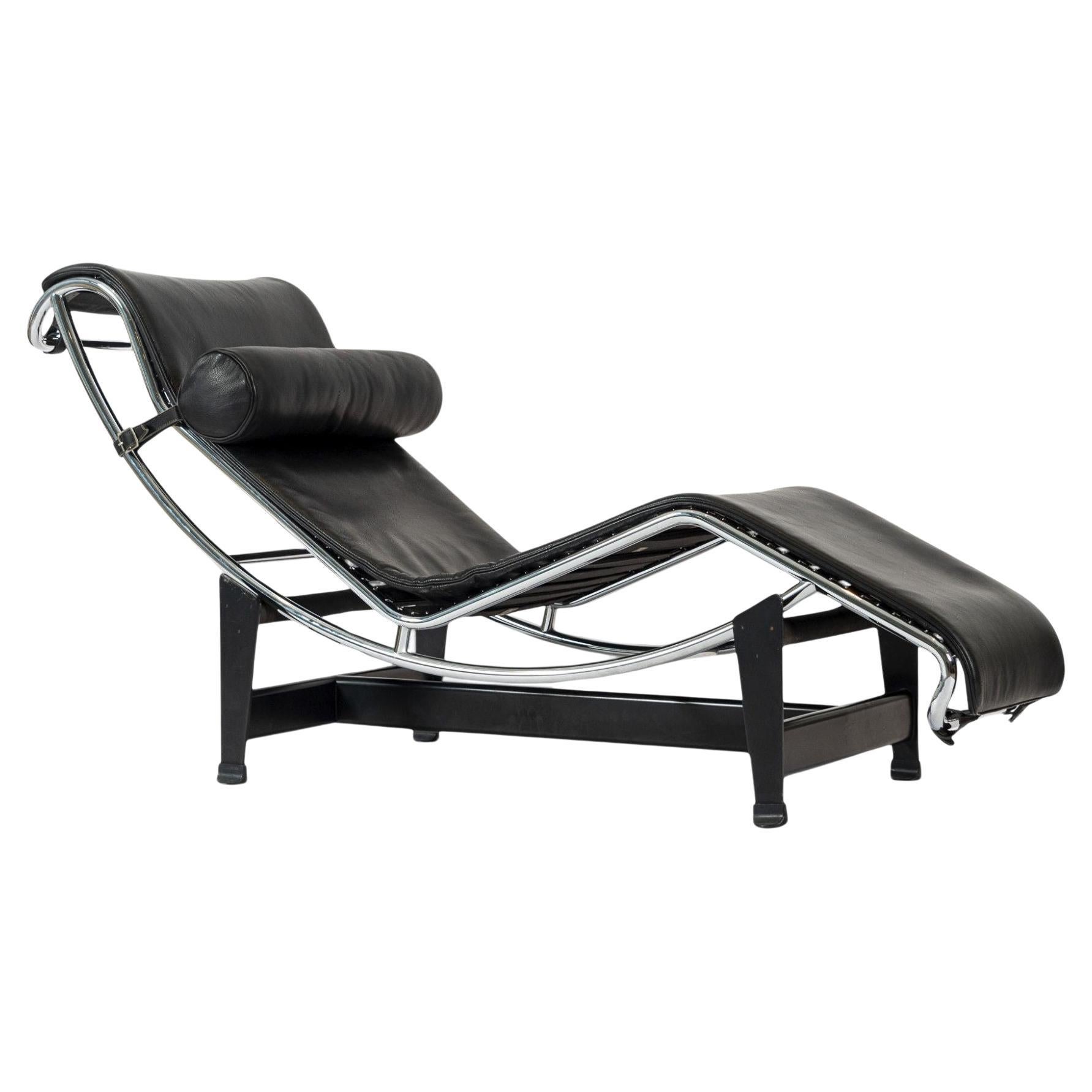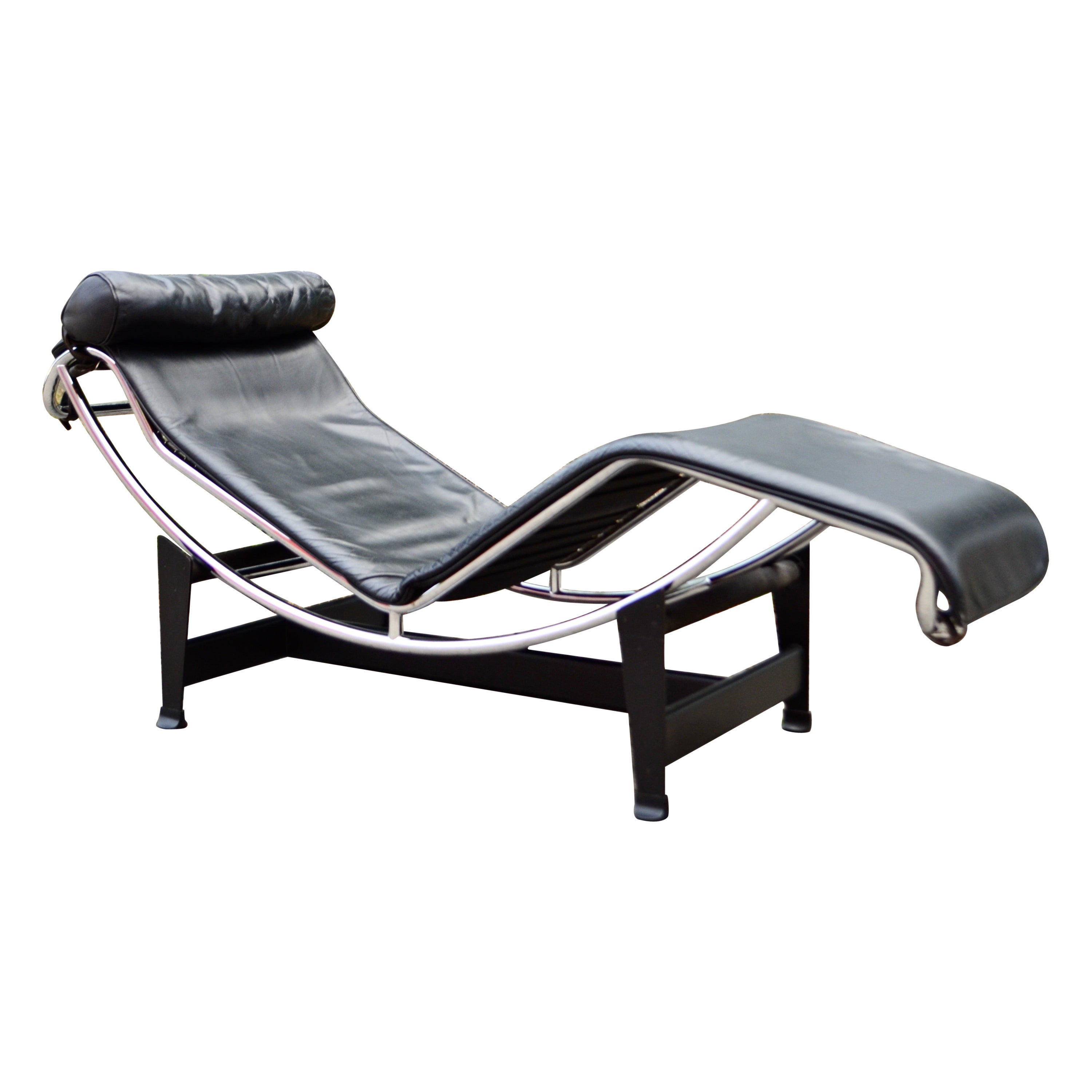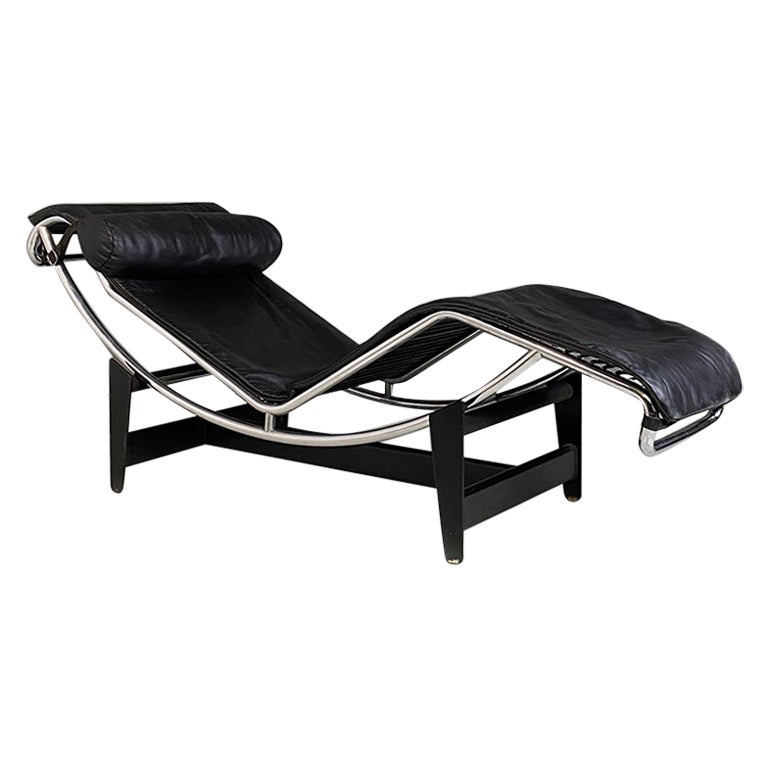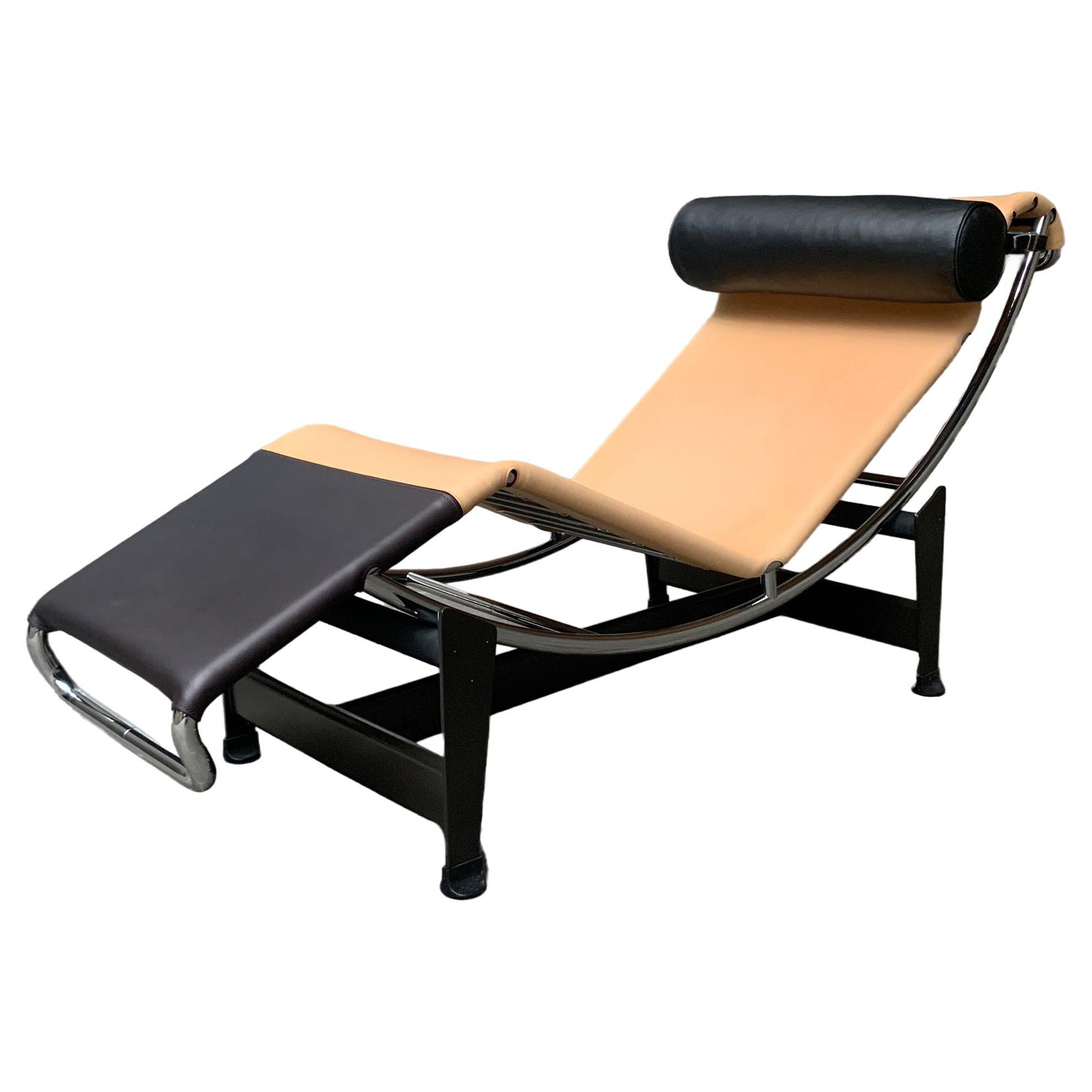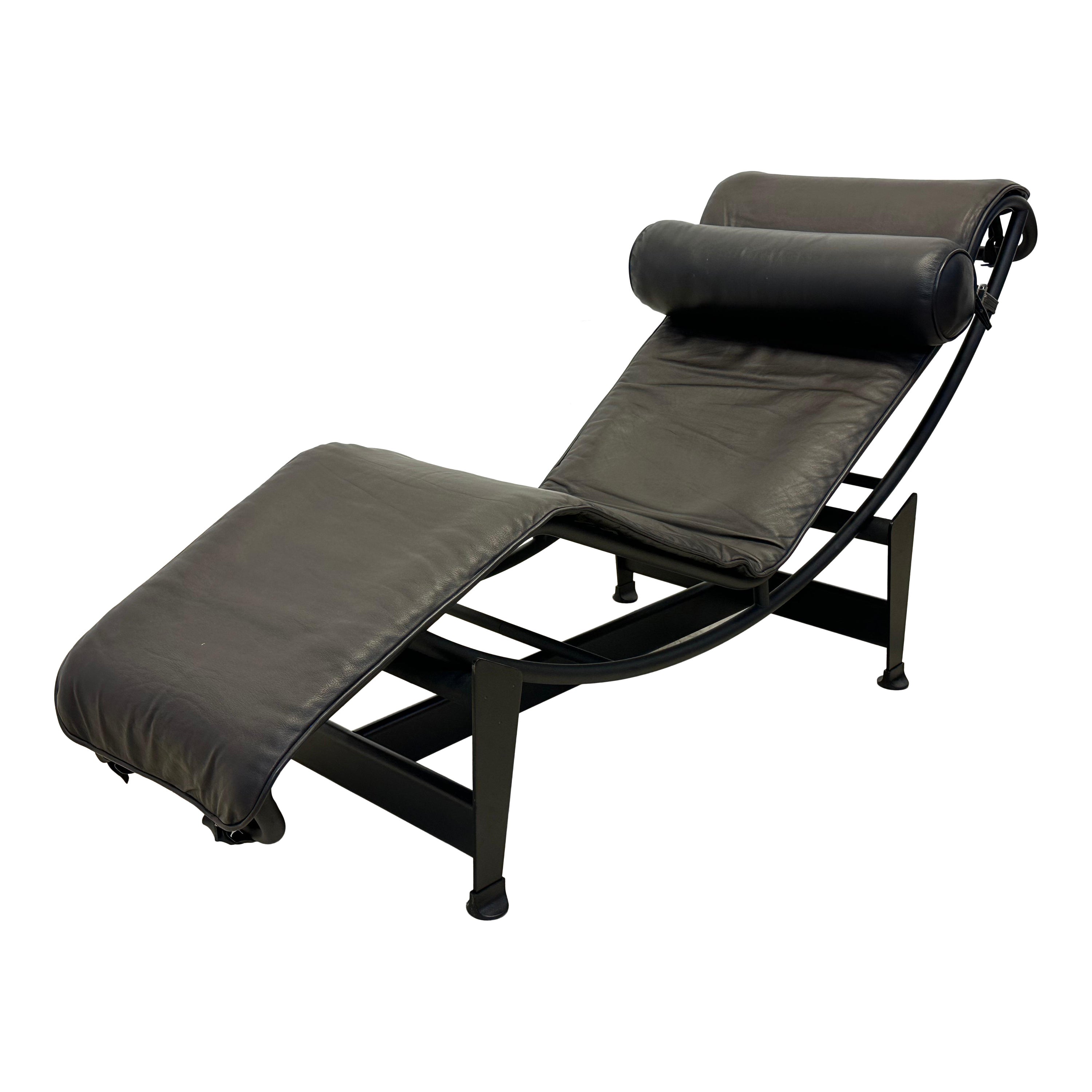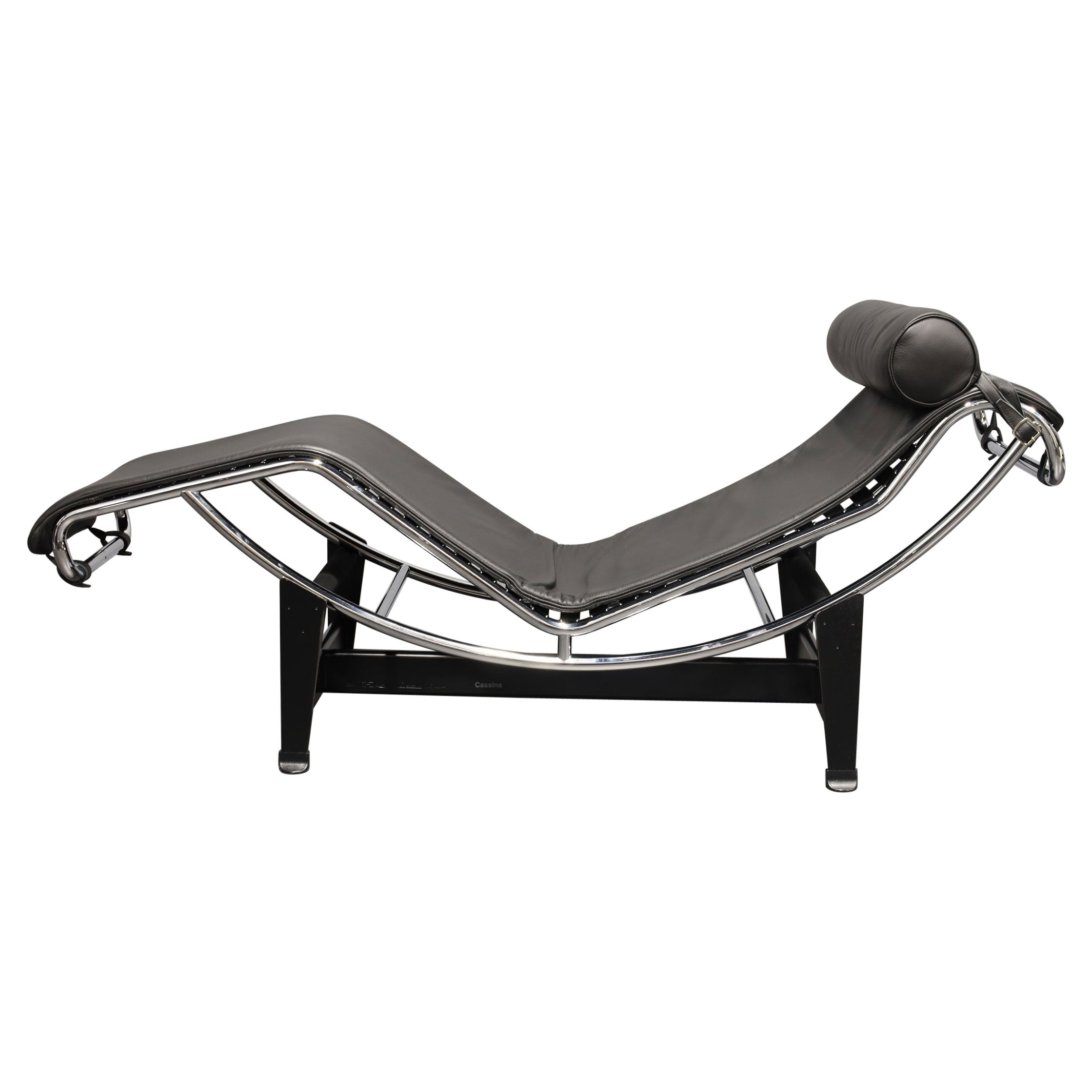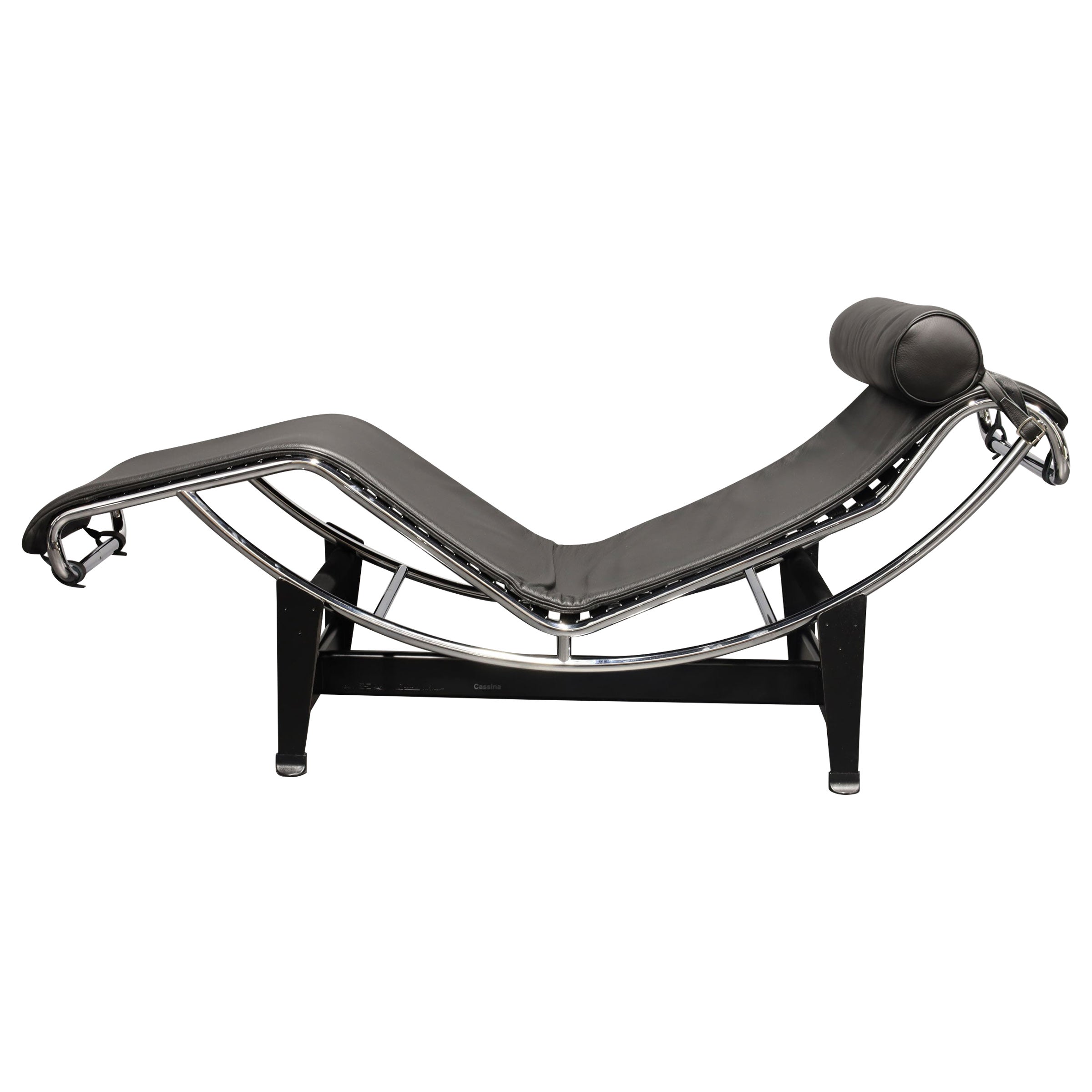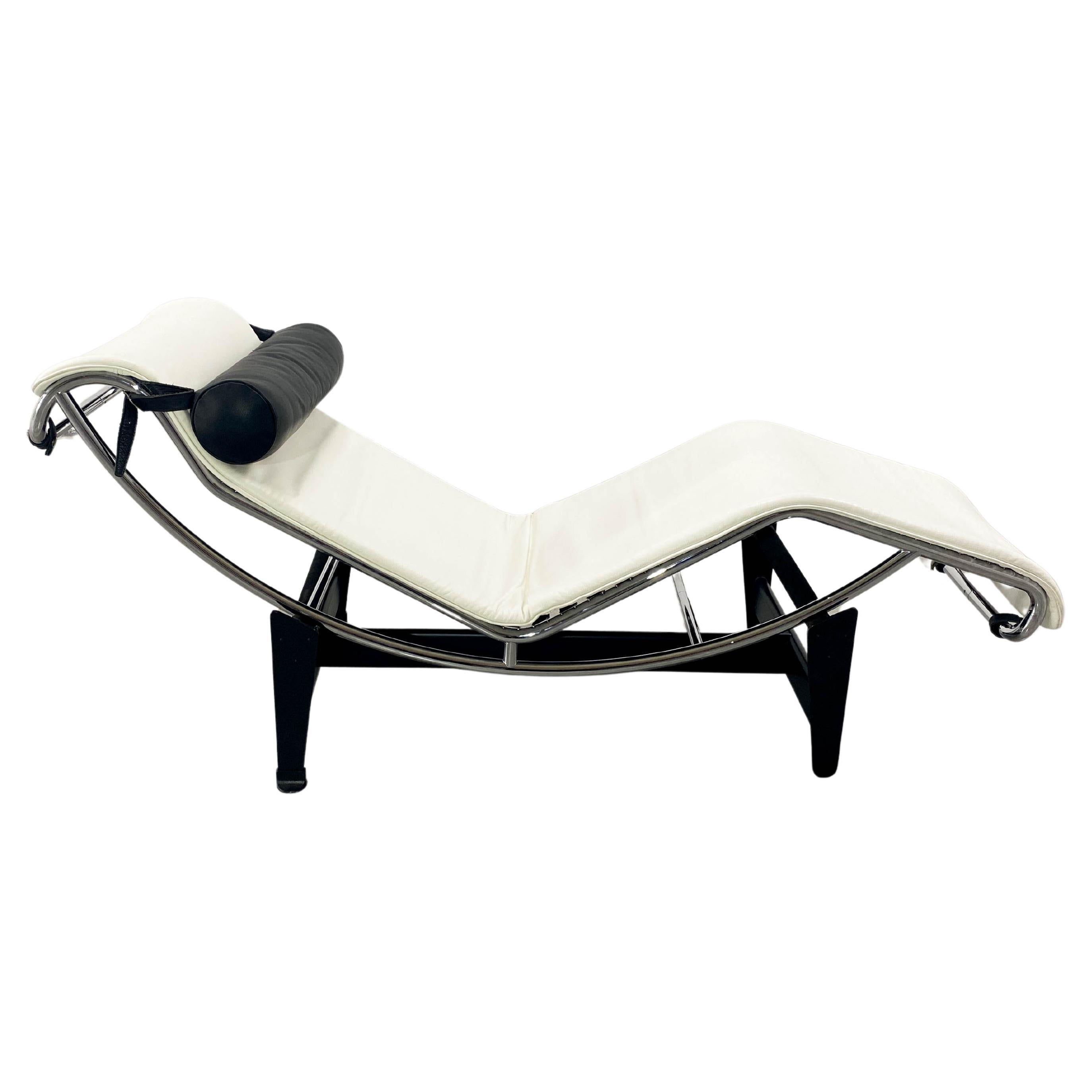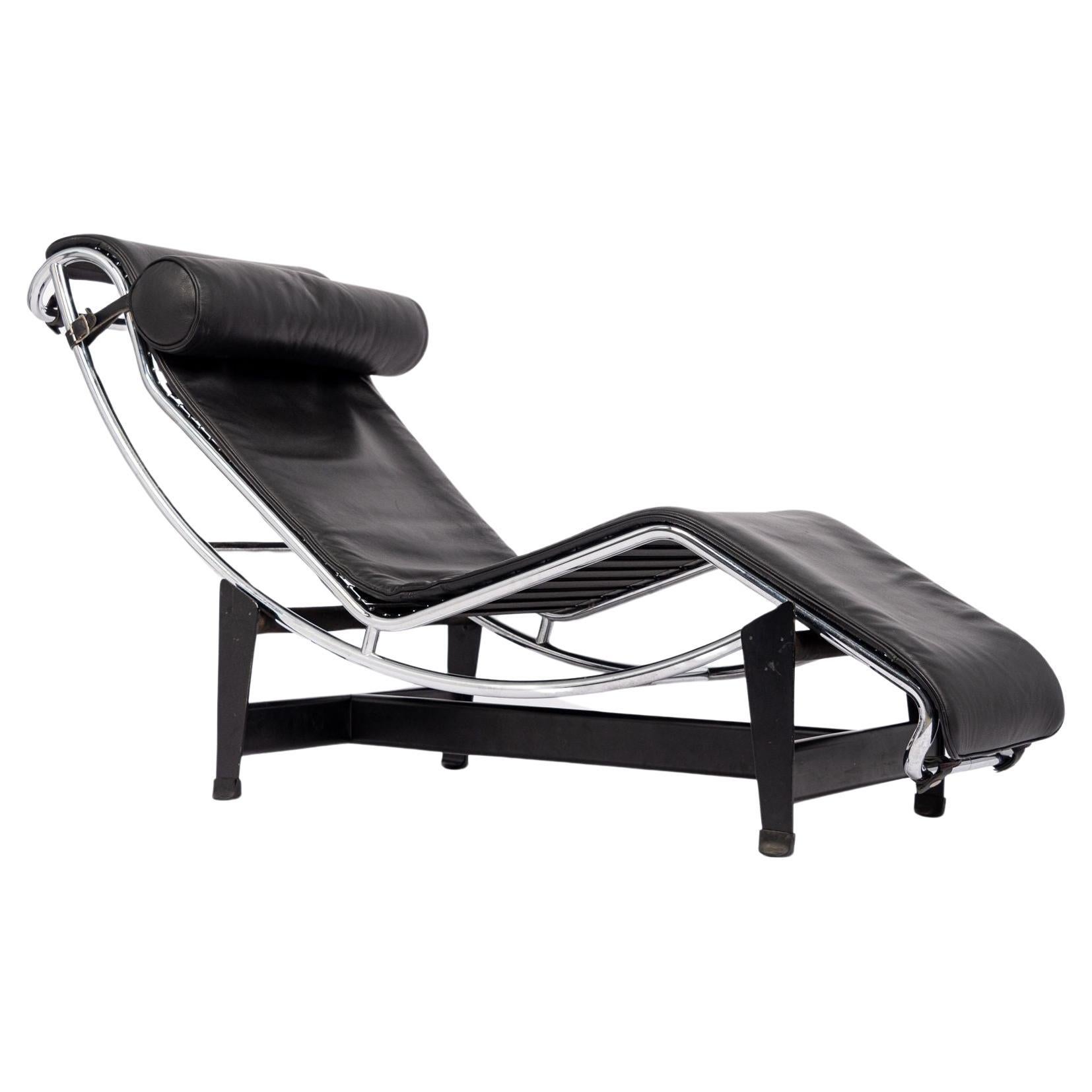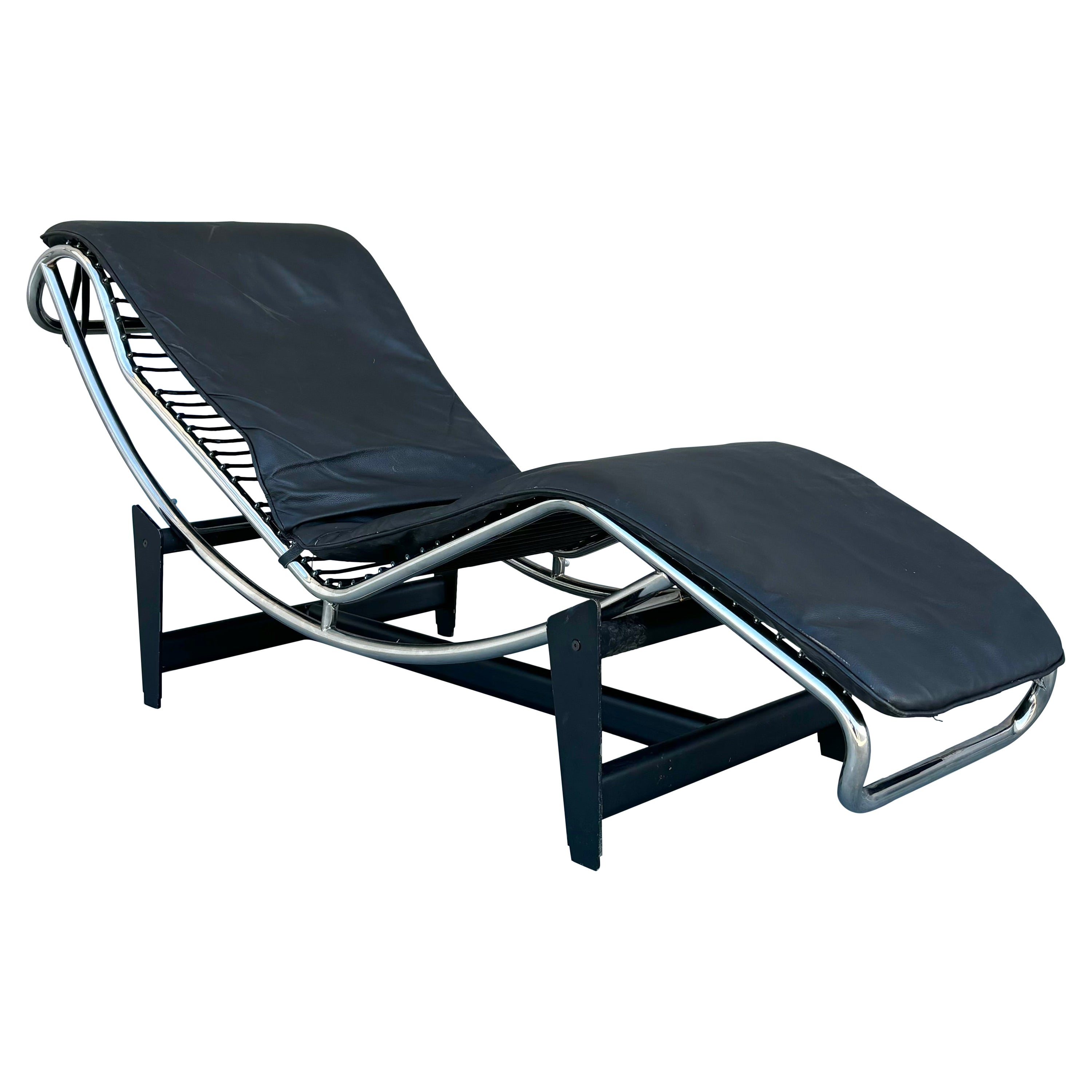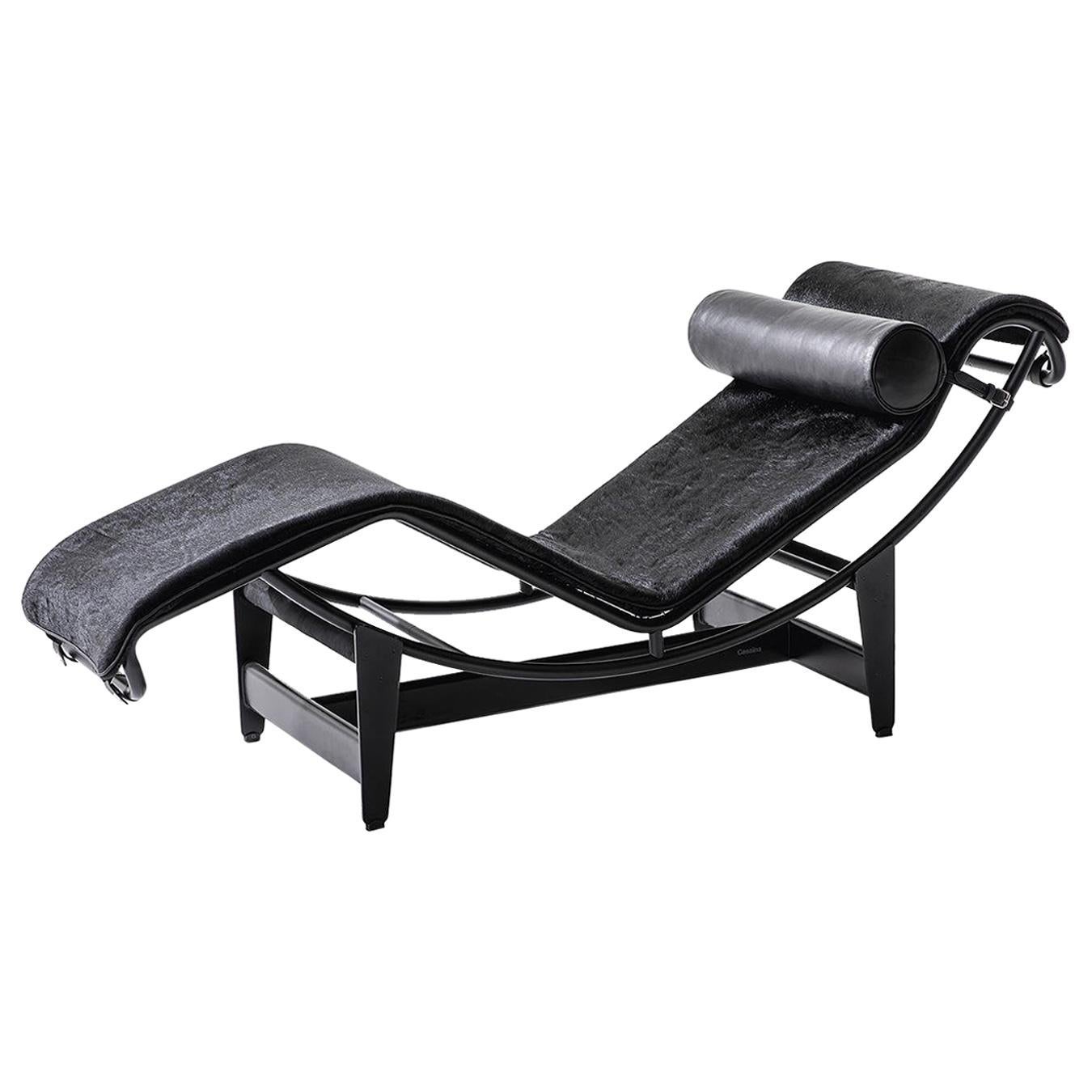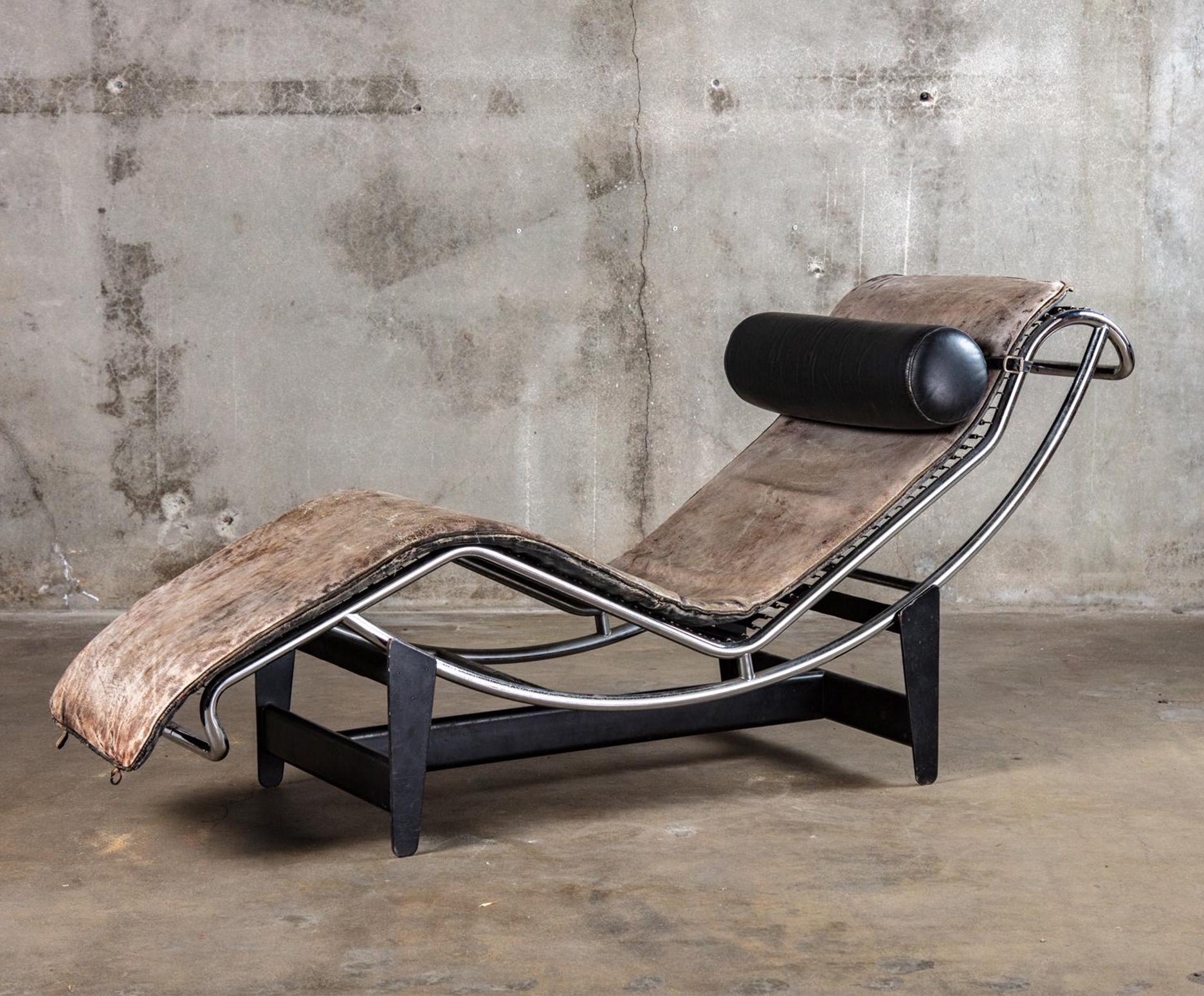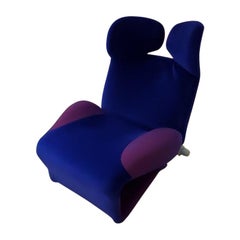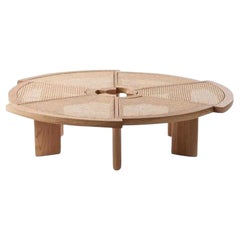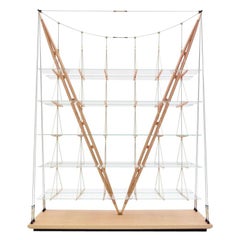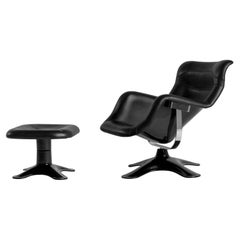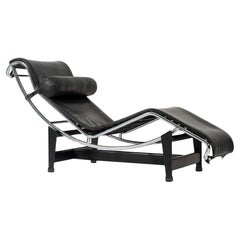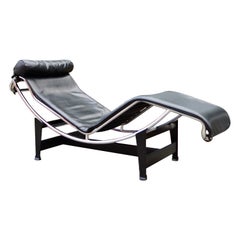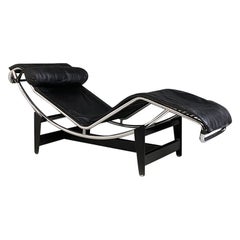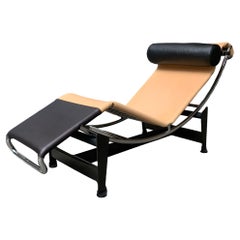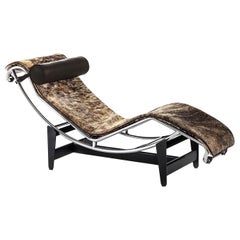
Cassina LC4 Pampas Chaise Lounge, Pad in Pampas Hair, Brown Leather Headroll
View Similar Items
Cassina LC4 Pampas Chaise Lounge, Pad in Pampas Hair, Brown Leather Headroll
About the Item
- Creator:
- Design:
- Dimensions:Height: 27.17 in (69 cm)Width: 22.05 in (56 cm)Depth: 64.18 in (163 cm)
- Style:Mid-Century Modern (Of the Period)
- Materials and Techniques:
- Place of Origin:
- Period:
- Date of Manufacture:2016
- Condition:
- Seller Location:Vancouver, CA
- Reference Number:1stDibs: LU331539600311
LC4 Chaise Longue
Charles-Édouard Jeanneret, the Swiss-born designer and architect known as Le Corbusier (1887–1965), famously described the houses he designed as machines to live in. It is only fitting then that he would furnish each home with its own machines built to meet specific needs. Designed in 1928, the LC4 chaise longue is a “relaxing machine,” according to Le Corbusier, its curves mimicking those of a lounging body. Part of his first-ever collection of furniture, made in collaboration with designer Charlotte Perriand (1903–99) and his cousin Pierre Jeanneret (1896–1967), the LC4 is an ode to the principles of modernism: rejection of ornament and the prioritization of functionality.
Le Corbusier believed that furniture should be an extension of our limbs and that it should adapt to our functions. In reflecting his sketches of the various positions of the lounging human body, the LC4 chaise longue features a fully movable frame that adjusts at the base, allowing the user to set it upright or fully reclined. The curved tubular steel base echoes the material exploration taking place at the beginning of the 20th century, in which designers experimented with the flexibility of steel, plastics and molded plywood. But the upholstery was cowhide or leather, the softness of which starkly contrasts with the industrial steel and angular shape. The LC4 has a sculptural presence in any given room, which is perhaps a result of Le Corbusier having dispensed with the metric system and instead drawing on his own system of proportion based on the “ideal” male body.
Furniture designed by Le Corbusier in collaboration with Pierre Jeanneret and Charlotte Perriand — a gifted innovator who was initially dismissed by the French architect but was later tasked with creating furniture and interiors — was originally produced by Austrian manufacturer Thonet. But in 1964, the Italian furniture company Cassina acquired the production and sales rights to the LC4 chaise longue, and the LC collection, as it was christened, has been in production there ever since. The collection originally included 19 pieces, each titled in the same alphanumerical style — LC1, LC2, LC3 and so on — that encapsulated a full range of furniture, from armchairs to dining tables.
The LC4 remains the definitive chaise longue of the 20th century, its position secured by its unusual form and its representation of functionality and modernism. With the LC4, Le Corbusier also confronted the inconceivable challenge of making an object built like a machine feel inviting and comfortable.
Charlotte Perriand
A pioneer of modernism in France, Charlotte Perriand was one of the most influential figures in 20th-century design and architecture. In her long career, Perriand’s aesthetic grammar constantly evolved, moving from the tubular steel furniture of the Machine Age to a lyrical naturalism that is reflected in her enduring designs for chairs, sconces, daybeds and other works.
Perriand’s studies at the Ecole de L'Union Centrale de Arts Decoratifs left her enthralled by Charles-Édouard "Le Corbusier" Jeanneret and his vision of a new, rational architecture. In 1924, she joined his studio to design furniture along with Pierre Jeanneret, Corbu’s partner and cousin.
Together, they devised some of the finest examples of early modernist furniture, including two icons of the era: the B306 chaise — later renamed the LC4 — with its swooping frame and hide upholstery; and the chunky, steel-framed Grand Confort club chair. Both pieces were part of the LC line, which saw the trio of designers carrying out bold experiments with tubular chromed steel, just as architect and Bauhaus faculty member Marcel Breuer had executed with his cantilever Cesca chair around the same time. (Furniture created by Perriand, Le Corbusier and Pierre Jeanneret was originally produced by Austrian manufacturer Thonet but Italian firm Cassina acquired the production and sales rights to their works in 1964.)
Collaborative design produced another Perriand triumph: in the early 1950s, she and Jean Prouvé were engaged to produce desks, worktables and bookcases for the University of Paris. The bookcases — slim pine shelves with brightly painted aluminum dividers — are minimalist mid-century masterpieces.
By the end of that decade, Perriand’s aesthetic had changed completely from the earliest days of her career. She produced a series of furniture in ebonized wood: chairs with gentle S-curve legs, front and back; tables with elliptical tops. In the 1960s, Perriand pushed the boundaries of prefab to produce high-quality housing and furnishings at low cost for the French ski resort Les Arcs. She also adopted an almost rustic look at the time, designing simple chairs with dowel-cut frames and rush seats.
Everything in Perriand’s oeuvre is beautiful, whether it’s the centerpiece of a décor or an accent, and her work is in every great design collection, public and private.
The vintage Charlotte Perriand furniture for sale on 1stDibs includes stools, coffee tables, case pieces, lighting and more.
More From This Seller
View All21st Century and Contemporary Italian Modern Armchairs
Fabric
2010s Italian Modern Coffee and Cocktail Tables
Cane, Oak
2010s Italian Modern Bookcases
Brass, Stainless Steel
2010s Finnish Modern Lounge Chairs
Steel
2010s Italian Armchairs
Fabric
2010s Danish Scandinavian Modern Lounge Chairs
Sheepskin, Oak
You May Also Like
Early 2000s Italian Bauhaus Chaise Longues
Steel, Chrome
20th Century Italian Bauhaus Chaise Longues
Chrome, Steel
Vintage 1970s Italian Modern Chaise Longues
Metal, Steel
Mid-20th Century Italian Mid-Century Modern Chaise Longues
Steel, Chrome
Late 20th Century Italian Mid-Century Modern Chaise Longues
Steel
Early 2000s Italian Mid-Century Modern Chaise Longues
Leather
